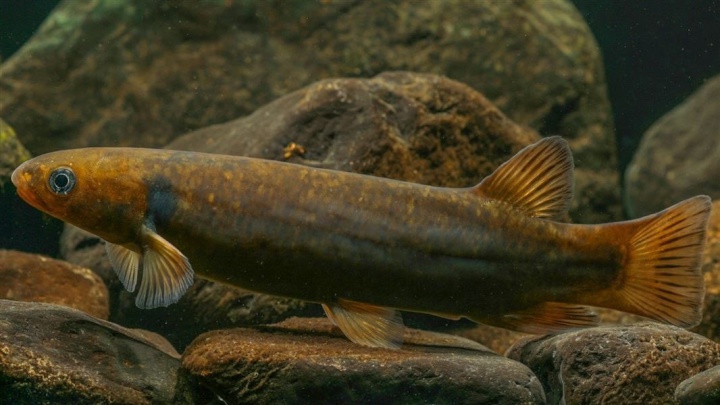Threatened, Native Fish Discovered In Hawke's Bay
A potential new population of Shortjaw kōkopu, one of the five whitebait species, has been discovered in Northern Hawke’s Bay.

Image courtesy of DoC
Hawke’s Bay Regional Council’s Senior Scientist, Dan Fake, says this breakthrough discovery marked the first time the native fish has been found in Hawke’s Bay.
“Shortjaw kōkopu are classified as threatened. This rare fish is also taonga, so we are thrilled to discover a potential population in our region.”
While water testing in the Kopuawhara catchment north of Mahia Peninsula, Hawke’s Bay Regional Council detected the species’ presence using eDNA – an innovative technique that can identify DNA that has shed or been excreted from organisms into the natural environment.
“There’s more research to be done as eDNA only tells us that they are present, not how many are in the catchment. The next step for us is to find out more about their population size and pinpoint where they’re residing.”
Shortjaw kōkopu are rare on North Island’s East Coast, with only a small number recently discovered in Tairawhiti Gisborne.
Andrew Horrell, a Hawke’s Bay Regional Council Freshwater Ecology Technician, says considering the proximity of both populations, it’s likely they are linked.
“We know the Kopuawhara catchment drains into the sea north of Mahia Peninsula. Given the presence of this species in Tairawhiti, it’s anticipated the Hawke’s Bay population has originated from the same larval supply.”
Hawke’s Bay Regional Council will be working with mana whenua, Department of Conservation (DOC) and landowners to develop a targeted survey and learn more about the Shortjaw kōkopu population in Hawke’s Bay.


 Gordon Campbell: On Why Europe Is Being Made To Go It Alone
Gordon Campbell: On Why Europe Is Being Made To Go It Alone  Te Pati Maori: No ‘Māori Privilege’ In Education
Te Pati Maori: No ‘Māori Privilege’ In Education Peace Action Wellington: No To Anti-Protest Law
Peace Action Wellington: No To Anti-Protest Law Public Service Commission: Findings Of Inquiry Into Protection Of Personal Information Released
Public Service Commission: Findings Of Inquiry Into Protection Of Personal Information Released NZ Principals Federation: Minister's View Not The Experience Of Schools, Say Principals
NZ Principals Federation: Minister's View Not The Experience Of Schools, Say Principals Lawyers for Climate Action: Proposals To Weaken Climate-Related Disclosures A Backwards Step
Lawyers for Climate Action: Proposals To Weaken Climate-Related Disclosures A Backwards Step NZ Government: Kiwi Campaign Invites Aussies To Come On Over
NZ Government: Kiwi Campaign Invites Aussies To Come On Over


